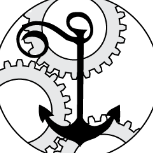Overview
About This Club
Text
Email Address
- What's new in this club
-
Cosillas joined the club
-
ReggieRich joined the club
-
 SLYRETAIL joined the club
SLYRETAIL joined the club -
 LHCC joined the club
LHCC joined the club -
tharwat_group joined the club
-
Caps joined the club
-
.thumb.jpg.6ea7e32866e8e49aaf86e3ac3181ff6e.jpg) Christopher_N joined the club
Christopher_N joined the club -
.thumb.png.5a0aa90eef0b88ff4b0194c27e80df75.png) Ievgen joined the club
Ievgen joined the club -

What is FIFO?
ACE-IroncladCafe replied to Elias's topic in Finances, Accounting and Fintech's Topics
Sorry to necro, but for those that may find this in a search and are trying to learn, please keep in mind that 1MazManny's post is backwards. FIFO = First In, First Out; Oldest items are sold first. LIFO = Last In, First Out; Newest items are sold first. Loyverse has a decent article on best FIFO practices here. -
 ACE-IroncladCafe joined the club
ACE-IroncladCafe joined the club -
 Merietech joined the club
Merietech joined the club -
HernandezBBQ joined the club
-
ChuanHin joined the club
-
 Loeurt joined the club
Loeurt joined the club -
 kor001 joined the club
kor001 joined the club -
BYTES joined the club
-
 Kay joined the club
Kay joined the club -
 santaana joined the club
santaana joined the club -
LIMJOE joined the club
-
Deepdishdelish joined the club
-
 Christine joined the club
Christine joined the club -
 Mia joined the club
Mia joined the club -
 Amirah joined the club
Amirah joined the club -
Manuel joined the club
-
Are there full set of services provided by digital only banks for small business, which usually traditional banks provides?
-
Yasuaki joined the club
-
.thumb.png.78e1fbec13d933b6d7c7c465169211fa.png) Edward joined the club
Edward joined the club -
 Andy joined the club
Andy joined the club -
ink joined the club
-
In what countries, what sectors, what specific businesses can benefit from POS financing? What services are available?
-
Elias joined the club
-
What is the difference between purchase order and invoice?
ink replied to Manuel's topic in Finances, Accounting and Fintech's Topics
A purchase order is a document, which the buyer sends to a supplier. A purchase order includes the list of products or goods (or services in some cases) that the buyer wants to buy from the seller, their quantity, supply price, date of creation and shipment date, shipping address, and other useful information for this order. Invoice is a document, which the supplier sends to the buyer. It includes actual information about the list of products, their quantity, and price. Usually, the invoice is sent after both the buyer and supplier completely agrees and confirms the purchase order. Therefore, in some cases, the purchase order can be changed to actual quantity and price of products. After the invoice is paid, the supplier sends the products to the buyer. -
What is the difference between purchase order and invoice?
Manuel posted a topic in Finances, Accounting and Fintech's Topics
Who knows, what is the difference between purchase order and invoice? Seems it is very similar documents. -
What is historical cost?
Helen replied to Rick Murray's topic in Finances, Accounting and Fintech's Topics
Historical cost is the original cost of the item on the date of purchase. It is used in accounting as a measure of value for recording price of assets on the balance sheet. An example of this may be seen in real estate purchases. Let us suppose that a company had purchased a building in 1932 in downtown New York at $10,000. In 2018, that building cost $10 billion. But the asset recorded on the balance sheet is $10,000. Other than the purchase price, the historical price also includes any additional costs incurred to make the purchase full operating asset. For example, the company purchased equipment for a restaurant at $25,000. Also, delivery and installation of equipment cost $2,500. Historical cost of restaurant equipment is $25,000 + $2,500 = $27,500. That value will be recorded on the balance sheet. -
What is a money market account?
Helen replied to Rick Murray's topic in Finances, Accounting and Fintech's Topics
Money market account (MMA) is an interest-bearing account, which you can open in most US banks. It seems like an ordinary saving account but has some differences. The key difference of MMA from a savings account is how the bank uses your money. If you put money in a savings account, the bank has a limitation on its use for a loan (by law). But if you put your money in MMA, the bank can invest it in a loan or other low-risk assets to another borrower. Minimal deposit amount in MMA should be higher than the deposit on standard saving account; the lower threshold starts from $500 or $1000 (depends on the bank). The minimal account balance of MMA also should be higher. But MMA also has several perks for you: interest rate of MMA is higher than saving account; as well as a savings account, MMA is protected by Federal Deposit Insurance Corporation (FDIC); you have access to funds in the form of debit card transactions or ATM withdrawal. The law allows you to use it a maximum six times per month (many banks usually allow 3 or 4 times). If you need an account more liquid than a savings account and want to earn more interest rate than a checking account, you can use MMA. -
What is a money market account?
Rick Murray posted a topic in Finances, Accounting and Fintech's Topics
What is a money market account? -
What does tax free weekend include?
Rick Murray replied to Chuck's topic in Finances, Accounting and Fintech's Topics
What is a tax-free weekend? Tax-free weekend (or sales tax holiday) is a tax elimination or reduction for specific goods in certain days or weeks. In the United States, tax-free holidays usually occur in the same weeks or weekends each year. Each state has its own schedule, but most of them occur in the last week of July or first half of August. Tax-free weekends are designed to help people save money on buying goods necessary for living and studying. In most cases, this includes school supplies and books, clothing, computers and Energy star products. In Virginia, Alabama, Florida, and Louisiana where hurricanes happen, some tax-free weekends also include hurricane preparedness items. Some tax-free weekends are created as incentives for supporting the development of businesses. -
What is historical cost?
-
What does tax free weekend include?
Chuck posted a topic in Finances, Accounting and Fintech's Topics
What does tax free weekend include? -
What is negative interest rate?
Chuck replied to Diego's topic in Finances, Accounting and Fintech's Topics
A negative interest rate is an interest rate with a negative value. The point is that interest rates shall not fall below zero. So how is a negative interest rate possible? There could be a couple of reasons. 1. Real interest rate becomes negative due to inflation The real interest rate calculation formula is: Real rate = Nominal rate - Inflation For example, if a bank set the nominal interest rate at 3% and if the inflation is 3.5% a year, the real rate will be negative (-0.5%). In this case, if you put $100 in the savings account, normally, it should be $103 after one year. However, after inflation, it will be $99.50. As you see, as a depositor, you lose $0.50. 2. Nominal rate turned negative due to deflation It means that instead of receiving money on deposits, you must pay a fee to the bank for keeping your money there. Why is it so? When the country’s economy goes into deflation, people and businesses try to accumulate their savings instead of investing or spending money. As a result, the economy goes into recession because aggregate demand is decreasing. To prevent this, the central bank begins to charge negative interest. This encourages depositors to invest and spend money instead of paying a fee to keep it. In this case, a negative interest rate acts as a monetary policy tool. In 2014, the European Central Bank (ECB) cut the interest rates to below zero (set depositary interest rates at -0.4%). Denmark, Sweden, and Switzerland, which are not part of the eurozone, also have negative rates. In 2016, the Bank of Japan also reviewed its economic policies and began to charge a negative interest rate. -
What is negative interest rate?
-
How can be calculated the average age of inventory?
ink replied to Elias's topic in Finances, Accounting and Fintech's Topics
The average age of inventory shows how many days it takes to sell a piece of inventory. The calculation formula is: Average age of inventory = 365 / Inventory turnover or Average age of inventory = (Average inventory / Net sales) * 365 Inventory turnover = Net sales / Average inventory Average inventory = (Beginning inventory + Ending inventory) / 2 Net sales is the Cost of goods sold 365 - days of the year An example: The retail company’s inventory value is $1 billion and Net sales are $5 billion. In this case, the Average age of inventory is (1000000 / 5000000) * 365 = 73 days. The average age of inventory indicates how successful the retail business is. The lower the value of the average age of inventory, the more successful the retail company. And vice versa. If the average age of inventory high, it means that the company hasn't been very successful.- 1 reply
-
- 2
-

-

-
How can be calculated the average age of inventory?
Elias posted a topic in Finances, Accounting and Fintech's Topics
How can be calculated the average age of inventory? (formula) -
EZIGROW 4LITER RM180 500ML RN45 PENGHANTARAN PERCUMA TRANSFER MONEY
-
First In, First Out - You sell the latest version of the product in your inventory. Opposite of this is LIFO, sell the older items first. LIFO is what I use at my bar, to sell the previously stocked item before the newly purchased item. This keep inventory rotating so items do not get old in stock.
-
What is basic income?
Purple Moose replied to Chuck's topic in Finances, Accounting and Fintech's Topics
It's the opposite of complex income. -
How to calculate inventory turnover?
monica replied to John Morris's topic in Finances, Accounting and Fintech's Topics
Inventory turnover shows the frequency with what a store renew its stock in a period of time. In order to calculate Inventory turnover, we need to know COGS and Average Inventory. COGS or "Cost of goods sold" represent the total cost of inventory. COGS include all necessary costs for ag to appear like material, production, tools necessary in production but exclude transportation and marketing costs. Average inventory is calculated by summing beginning inventory and ending inventory (of a period of time) and dividing by 2. For example, if a store has COGS $100,000 per year and Average inventory 2,000 then the inventory turnover is 50. It means that in 365 days inventory renews 50 times, at every 7.3 days. In this case, the inventory turnover is quite high and can be interpreted as rapid sales or as low purchases for inventory. -
How to calculate inventory turnover?
John Morris posted a topic in Finances, Accounting and Fintech's Topics
How to calculate inventory turnover? -
What is FICA tax?
monica replied to Rick Murray's topic in Finances, Accounting and Fintech's Topics
FICA tax refers to the Federal Insurance Contribution Act tax and represent one of the deductions from gross income of the USA citizens. It comprises Social Security and Medicare taxes and are destined to fund the retired people and to offer to them medical care benefits after they become 65 years old. This tax reaches 15.3% from employee's wage and is payed half by employee and half by employer. Self-employed people must pay the entire percent. Briefly, FICA tax provides financial and medical support for the seniors of USA. -
On the foundation of automation people start worrying that most of the jobs will be made by robots while for human beings it will not be possible to earn money for living. Basic income is a social protection system provided by the government or other public institution, where each individual receives regularly a certain amount of money to ensure his existence, absolutely unconditionally and absolutely independent of the existence or the level of other income earned from other sources, such as income from work. In order to receive basic income unconditionally, people should not provide any evidence of the need for social assistance and should not provide any counter-service for money. The idea of basic income is currently developing and faces a lot of criticism at the moment, one of the most common critics being that people will not work anymore if they would have an unconditional regular income.
-
What is FICA tax?
-
Net pay is the result of Gross pay minus Deductions. What are these deductions? They, generally, refers to the taxes paid for a government, for medical insurance and job-related costs. In other words, net pay represents the money one takes home for his/her living expenses.
-
What is net pay?



